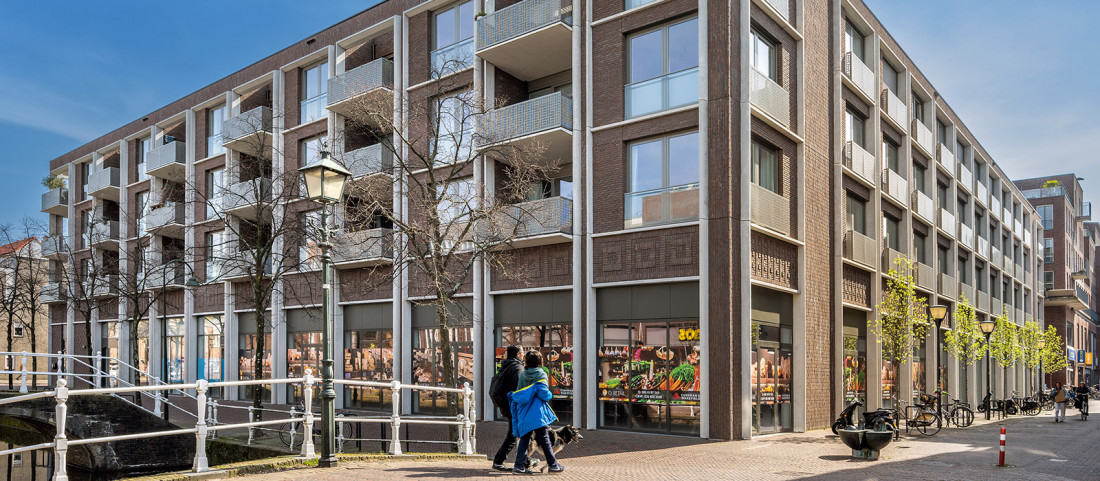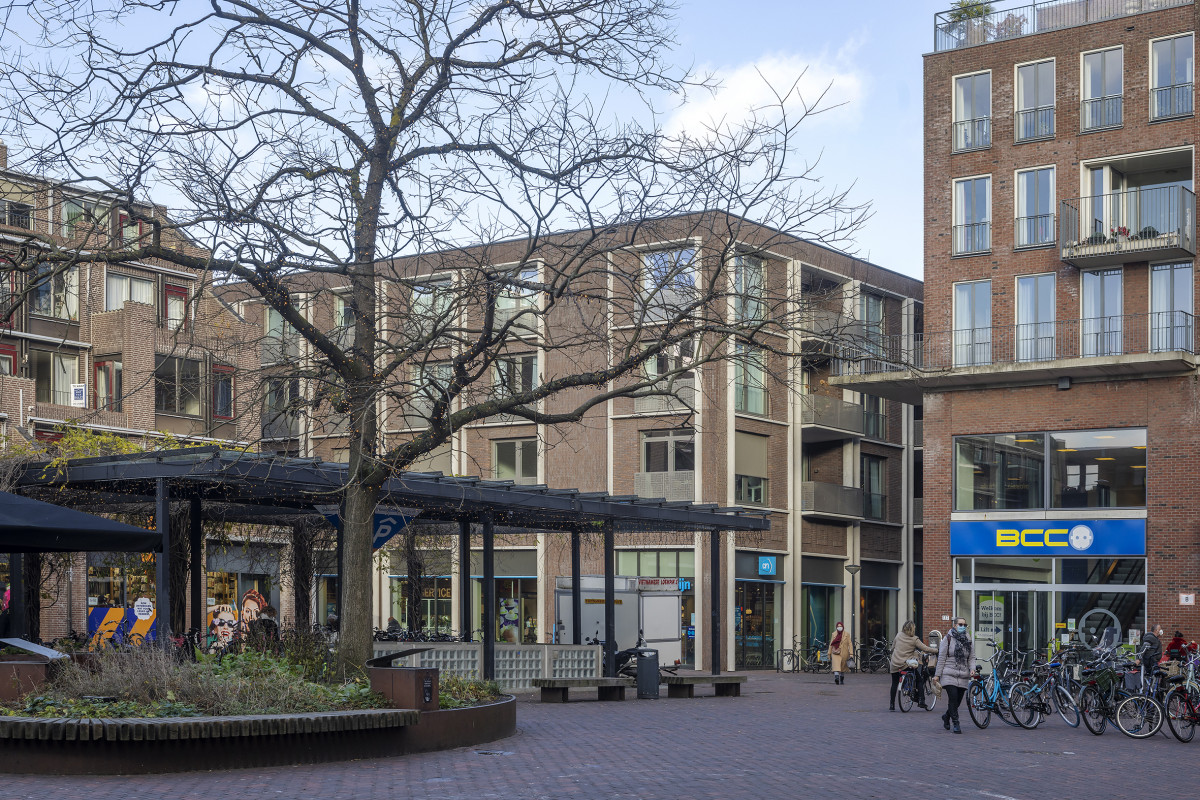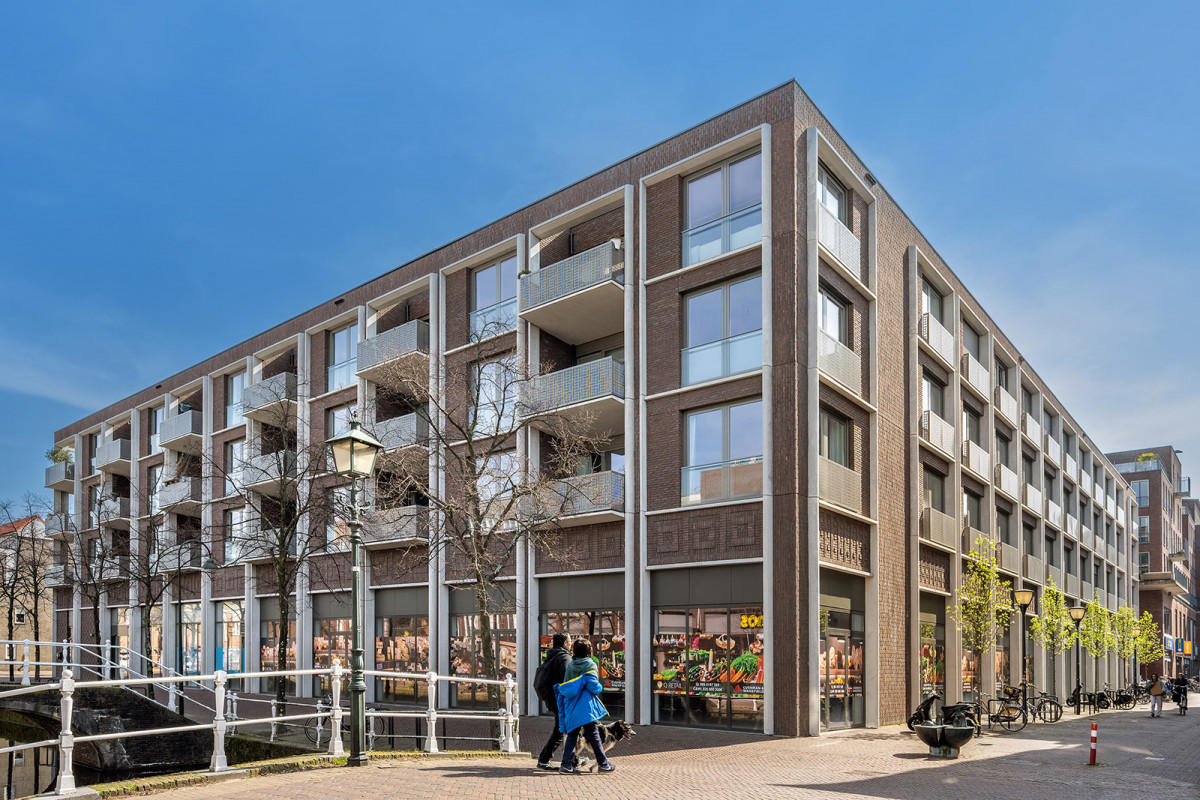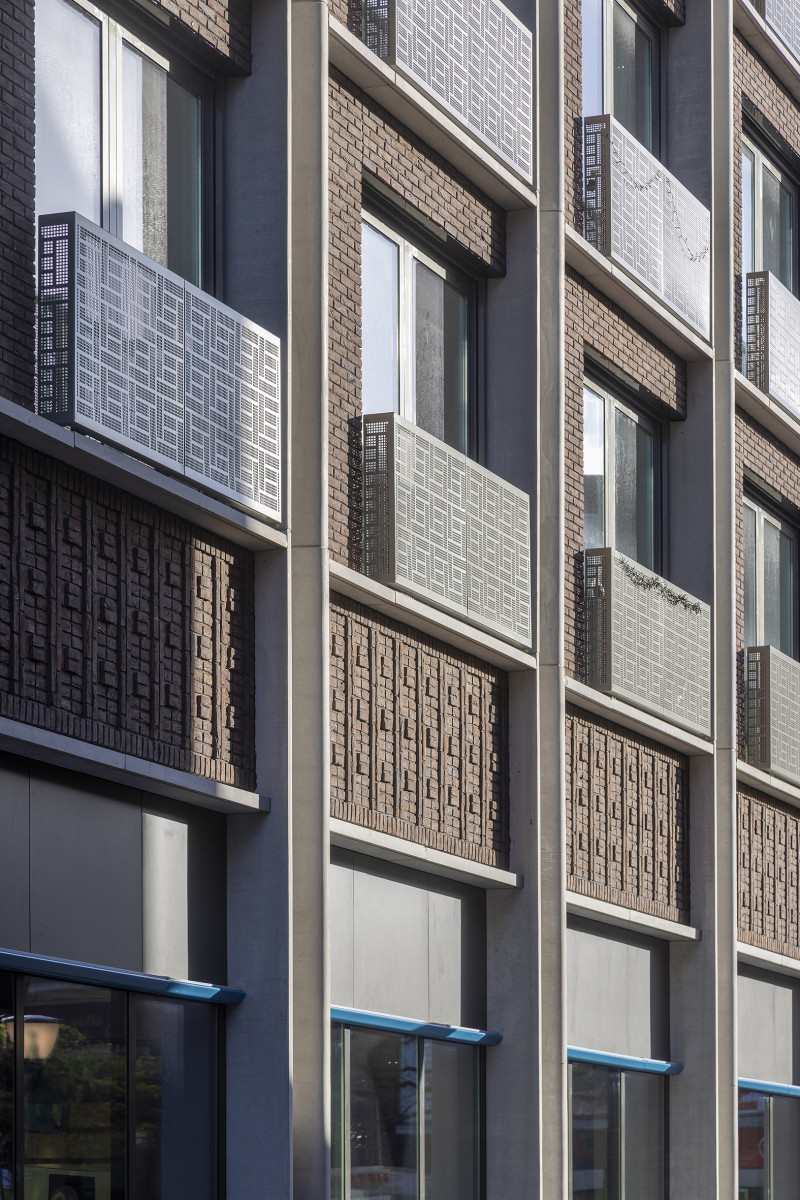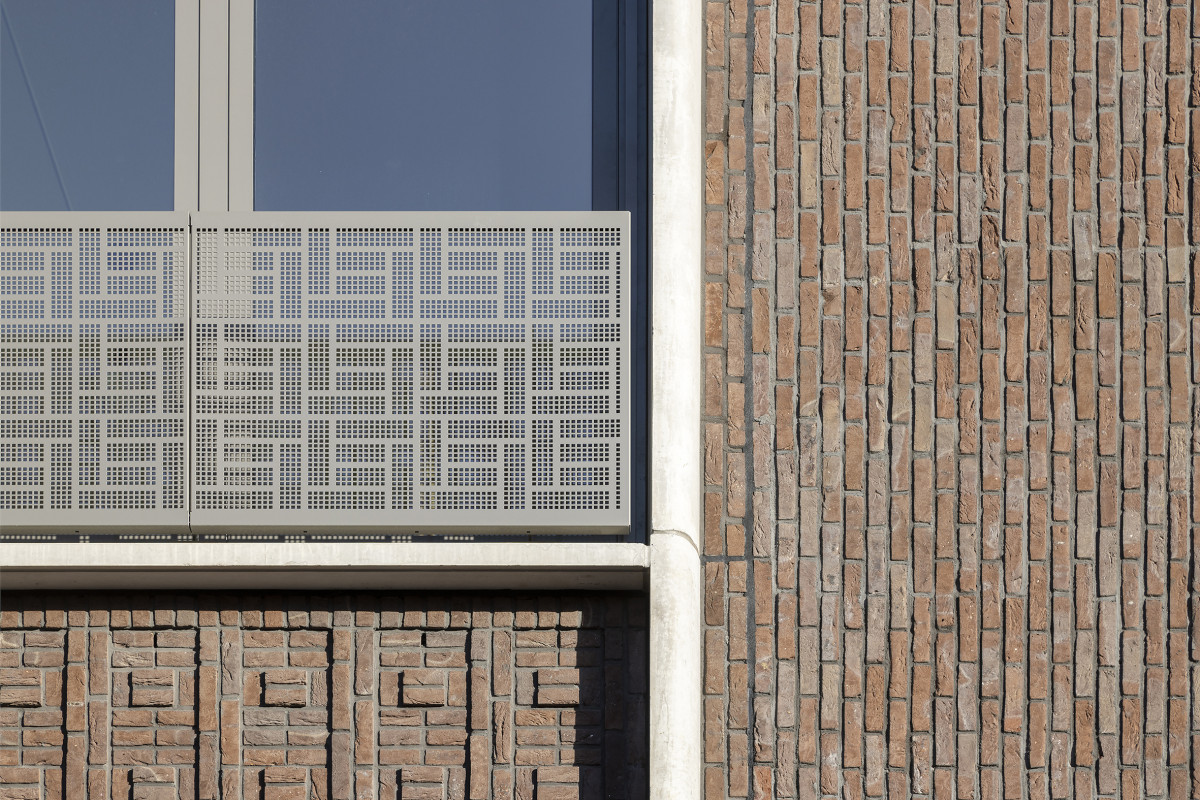2021 saw the completion of housing and retail complex Bastiaanpoort in Delft. The building occupies an important location on the edge of the historic city centre, previously home to department store V&D. After the bankruptcy of this retail chain, property developers MN and Proactief Vastgoed opted to redevelop the site on behalf of Pension Fund Metaal & Techniek. The result is a building block with rental housing and shops in the plinth, adding to the housing stock in Delft and the liveliness of the neighbourhood.
The Zuidpoort area
Bastiaanpoort is located at the edge of the historic centre of Delft, in the Zuidpoort area. For a long time, this was a blighted part of the city: in the 1950s, plans were drawn up to replace the dilapidated working-class houses with a large scale urban renewal project, but these plans were never carried out. A new master plan was drawn up in the late eighties; this plan foresaw the renovation of the remaining 19th-century buildings - primarily used by the Technical University - and the addition of new buildings, which largely follow the existing urban structure. So although Bastiaanpoort is completely surrounded by new construction, it is still a part of the historical urban fabric; the fact that the complex replaces a retailer with a 'landmark function' like V&D reinforces this connection with the city.
The building within the city
The building is situated at an important juncture on the route from the historic city centre towards the St Sebastiaansbridge and then to the campus of the TU Delft. This is a location that marks a transition between different 'spheres' within Delft: the transition between the old and the new, between the smaller and the larger scale, between different functions - the transition from the small-scale and ground-level parcelling of the Delft city centre to larger-scale, multi-storey buildings with shops and housing located above.
The building within its context
The outdated V&D department store, with its deep and dark floors, did not lend itself well to redevelopment with a residential function, and was therefore replaced by new construction. The enclosed building block accommodates a mixed programme, with a commercial plinth and three floors of rental housing. The housing on offer is diverse, with a total of 63 flats: spacious corner houses facing the sunny Bastiaansplein, smaller studios facing the busy Bastiaanpoort shopping area, and larger flats with balconies on the waterfront of the green Gasthuislaan, The features in the plinth correspond with these different 'characters'.
A recognisable, uniform building block
The complex is designed as a recognisable, uniform building block, executed in warm-hued brick. Standing at a height of four floors, it provides a transition between the higher new constructions around the Bastiaansplein and the lower buildings of the historical city centre. In addition, we also sought to capture the tension between the different scales, atmospheres, programmes and characters in our design. This is most apparent in the proportions and rhythm of the façades, which have a clear-cut overal structure that can accommodate different features and functions. This straightforward architectural concept allows for a variety of rhythms, adapted to the housing type and the scale of the urban space.
Inspired by Delft: the canals and Jan Schoonhoven
For the façade design, we drew inspiration from the typical architecture of the Delft canals, and translated the most characteristic features into a number of guidelines - without reverting to the past literally. Canal houses in Delft are typified by a layout which comprises a plinth, a raised surface and a cornice, as well as by a certain degree of verticality and by a contrast between brick and detailing in shades of white - executed in materials like natural stone or concrete. We translated this into an abstract, relief-like grid that lends form and legibility to the building block; this grid serves as a basic structure within which the various façade elements - balconies, storefronts, window frames, dense façade surfaces, expedition entrances - can have their place. U-shaped white concrete frames create a vertical double line which emphasises the contours of the grid. The spaces in between are filled in with standing half-brick masonry bonds. The "verticality" of the façade is further accentuated by receding the horizontal concrete bands. The grid can be read as an abstract interpretation of the Delft canal front, a sequence of protruding and receding planes which are reminiscent of the reliefs of local artist Jan Schoonhoven. Again, different scales come together.

